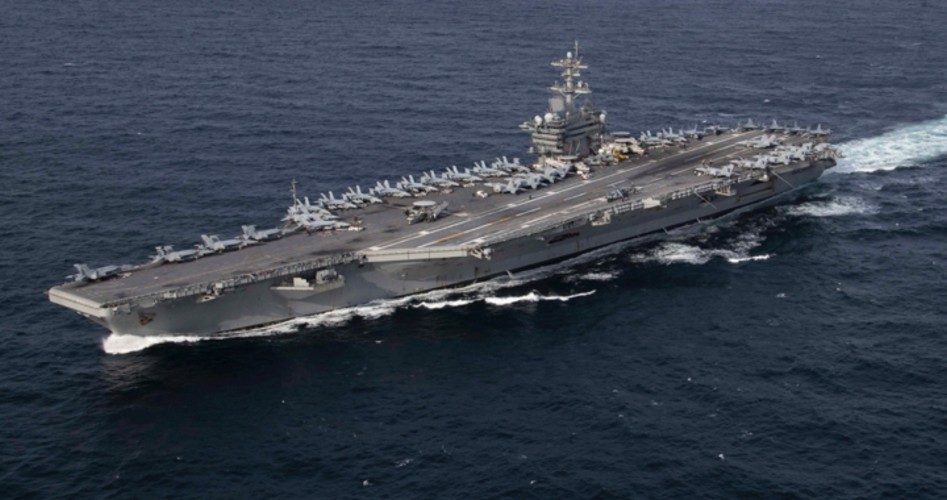
Podcast: Play in new window | Download ()
Subscribe: Android | RSS | More
Iranian Minister of Cultural and Social Affairs Hossein Nejat issued a warning on July 9 that Iran can strike American bases in the Middle East and destroy U.S. aircraft carriers if the United States attacks Iran.
“American bases are within the range of our missiles…. Our missiles will destroy their aircraft carriers if they make a mistake,” Nejat warned. “Americans are very well aware of the consequences of a military confrontation with Iran.”
On May 12, Amir Ali Hajizadeh, the commander of Aerospace Force of Iran’s Islamic Revolutionary Guard, said in response to the U.S. decision to deploy the USS Abraham Lincoln (shown) with Carrier Strike Group 12 and a bomber task force to the Middle East that the action has transformed the U.S. presence from a “serious threat” to “a target.”
“An aircraft carrier that has at least 40 to 50 planes on it and 6,000 forces gathered within it was a serious threat for us in the past but now it is a target and the threats have switched to opportunities,” Hajizadeh said.
A June 3 AP report said that the Abraham Lincoln remained outside the Persian Gulf. Officers aboard the carrier repeatedly told AP that they could respond rapidly to any regional threat from their position, at the time some 320 kilometers (200 miles) off the eastern coast of Oman in the Arabian Sea.
{modulepos inner_text_ad}
“You don’t want to inadvertently escalate something,” Captain Putnam Browne, the commanding officer of the Lincoln, told the AP.
When asked about why the Abraham Lincoln hadn’t gone through the Strait of Hormuz into the Persian Gulf, Rear Admiral John F.G. Wade, the commander of the carrier’s strike group, told journalists from the AP and other media outlets that his forces could “conduct my mission wherever and whenever needed.”
There are greater advantages to stationing the Abraham Lincoln outside the Persian Gulf than not wanting to “escalate” the situation with Iran, however. The Gulf is a relatively small body of water immediately south of Iran, and a carrier group stationed there is not only a “target,” as Hajizadeh said, but a sitting duck.
Kyle Mizokami, a defense and national security writer, explored whether Iran had the capability to sink a U.S. aircraft carrier in a May 8 article for The National Interest. Mizokami noted:
There are many reasons to be skeptical about [Iranian] Admiral [Ali] Fadavi’s claim [that Iran is capable of sinking a U.S. aircraft carrier]. The first is that Iranian forces have a range problem. U.S. forces, particularly those on aircraft carriers, have a much greater operational range than Iranian forces. The longest-range Iranian coastal defense missile, the Ghader antiship cruise missile, has a range of 186 miles — less than half that of a F/A-18E/F Super Hornet. The same goes for Iranian air power, where Iranian warplanes and their weapons are outranged by American defenses. Major U.S. warships such as aircraft carriers can stay well out of range of Iranian forces and operate with impunity.
However, just because we can operate with impunity near Iran doesn’t mean we should.
Warren Mass has served The New American since its launch in 1985 in several capacities, including marketing, editing, and writing. Since retiring from the staff several years ago, he has been a regular contributor to the magazine. Warren writes from Texas and can be reached at [email protected].
Related articles:
Iranian Military Leader Says U.S. Deployment of Carrier Group Makes It “a Target”
President Trump Beats War Drums for Iran
Are All the World’s Problems Ours?
Mike Pompeo vs. Rand Paul on the President’s Presumed War Powers

